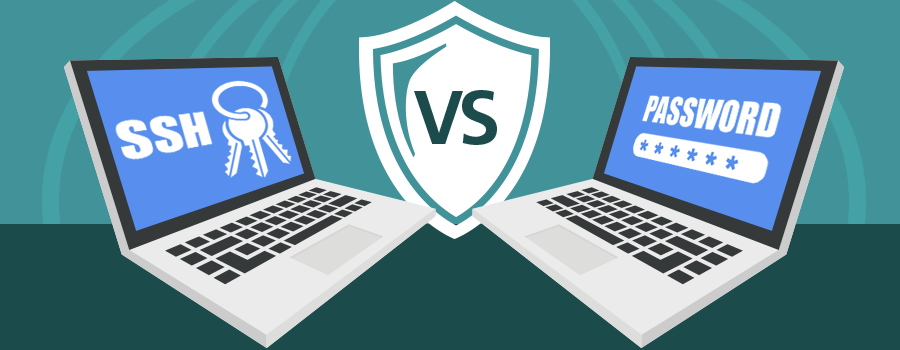
There are two popular methods of SFTP authentication: Using SSH keys and authentication. How do they work? Is one better or more secure than the other? Which is the best fit for your organization: SFTP with password or SSH Keys?
Questioning what the best SFTP security best practice is doesn't have an easy answer. Both SSH keys and passwords have their advantages and disadvantages; it depends on what your organization needs and how strong your cybersecurity policy is.
SFTP Password Authentication
Authenticating an SFTP server with a password is simple. The administrator creates a username and password combination for a user. After the setup is complete, whenever the user signs in, the server checks the username/password combination and approves or denies the request based on whether the password is correct.
To make this method secure, the admin can enable a failsafe: if someone incorrectly tries the password more than X number of times in X minutes, they’ll be blocked from the account. The admin can also set passwords to meet certain requirements (i.e. a specific length or includes capitalized letters, numbers, and symbols) and expire after a certain number of days—though whether this practice really prevents data breaches is still up for debate.
Pros: Easy to implement, can expire, can be assigned policies
Cons: Can be brute-forced, prone to human error and weak password creation, password policies may frustrate employees
SSH Key Authentication
Authenticating an SFTP server with a SSH key requires a little extra legwork, but it's a useful option for extra security. An SSH key pair is comprised of a private key and public key portion. The key pair is automatically generated by the computer and can be up to 4096 bits in length, which is much longer than a typical password.
You have a private key that’s kept on the SSH client software and a public key that’s kept on the SSH server.
Related Reading: Are SSH and SFTP the Same?
Once the public and private keys are stored, the client software can authenticate against the SSH server. Some SFTP servers require both an SSH key and password for additional authentication. Anyone who tries to login with the username or password (or both) but doesn’t have the correct private/public key match will be denied access to the server, regardless of whether they try to brute-force it.
Pros: Typically much more complex than a password, aren’t human generated, can have a password added for another factor of authentication, more complicated to brute-force than passwords
Cons: Don’t expire, prone to physical theft if someone takes the device they’re on, some key pairs are used across multiple SFTP servers which makes the private key valuable (and vulnerable)
Know Your Terms: GoAnywhere Glossary
Best Practices for SFTP with Passwords and SSH Keys
Neither SSH keys nor passwords are completely immune to compromise. There’s no one option that’s foolproof. However, if you’re not sure which one to use, we recommend using SSH keys alongside a password to authenticate your users against an SFTP server. Many big companies (including GitLab) suggest using a password with your SSH key as best practice. IT forums like StackExchange often say the same.
Why You Should Use SFTP with Passwords and SSH Keys
The biggest argument for using both? If someone compromises your private key (i.e. steals your device or installs malware on it), they won’t be able to compromise the SFTP server without the password/passphrase. And if someone has your password but not your private key? Game over for them. Of course, this isn’t foolproof either, but it’s dual-factor authentication … which is a step above password-only for SFTP authentication.
GoAnywhere Managed File Transfer supports the use of SFTP to secure, automate, and audit file transfers. You can authenticate users with SFTP passwords and SSH keys, meaning you can choose one, the other, or both to satisfy your IT security requirements. With our SFTP client, you can also deliver and retrieve files from your SFTP server through an encrypted tunnel, transfer multiple encrypted files per connection, set up alerts for failed transfers, and more.
